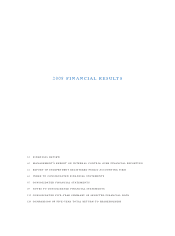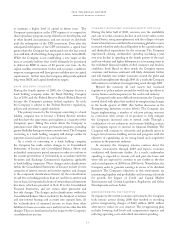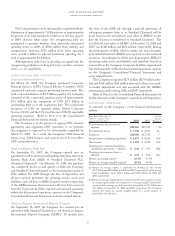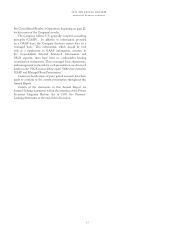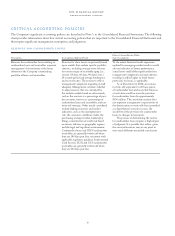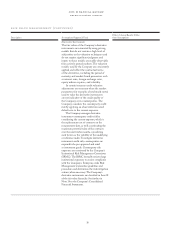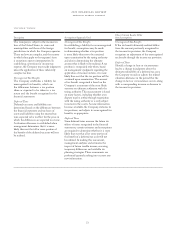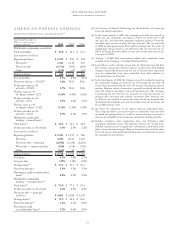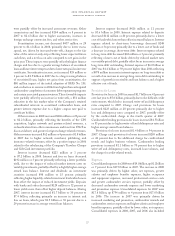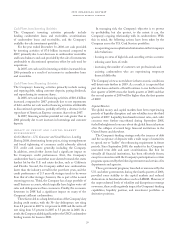American Express 2008 Annual Report Download - page 22
Download and view the complete annual report
Please find page 22 of the 2008 American Express annual report below. You can navigate through the pages in the report by either clicking on the pages listed below, or by using the keyword search tool below to find specific information within the annual report.
2008 financial review
american express company
fair value measurement (continued)
Description Assumptions/Approach Used Effect if Actual Results Differ
from Assumptions
Derivative Instruments
The fair values of the Company’s derivative
instruments are estimated by using pricing
models that do not contain a high level of
subjectivity as the valuation techniques used
do not require significant judgment and
inputs to those models are readily observable
from actively quoted markets. The valuation
models used by the Company are consistently
applied and reflect the contractual terms
of the derivatives, including the period of
maturity, and market-based parameters such
as interest rates, foreign exchange rates,
equity indices or prices, and volatility.
In certain instances credit valuation
adjustments are necessary when the market
parameters (for example, a benchmark curve)
used to value the derivative instruments
are not indicative of the credit quality of
the Company or its counterparties. The
Company considers the counterparty credit
risk by applying an observable forecasted
default rate to the current exposure.
The Company manages derivative
instrument counterparty credit risk by
considering the current exposure, which is
the replacement cost of contracts on the
measurement date, as well as estimating the
maximum potential value of the contracts
over the next twelve months, considering
such factors as the volatility of the underlying
or reference index. To mitigate derivative
instrument credit risk, counterparties are
required to be pre-approved and rated
as investment grade. Counterparty risk
exposures are monitored by the Company’s
Institutional Risk Management Committee
(IRMC). The IRMC formally reviews large
institutional exposures to ensure compliance
with the Company’s Enterprise-wide Risk
Management Committee guidelines and
procedures and determines the risk mitigation
actions, when necessary. The Company’s
derivative instruments are classified in Level 2
of the fair value hierarchy. See further in
Note 14 to the Company’s Consolidated
Financial Statements.
20



